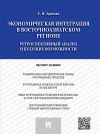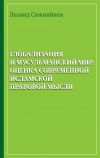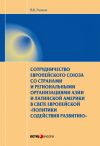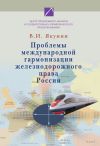
Автор книги: Коллектив авторов
Жанр: Прочая образовательная литература, Наука и Образование
Возрастные ограничения: +16
сообщить о неприемлемом содержимом
Текущая страница: 5 (всего у книги 33 страниц) [доступный отрывок для чтения: 8 страниц]
2. Юго-Восточная и Южная Азия: в поисках ответов на глобальные вызовы
Асеан в «смелом цифровом мире»
КАНАЕВ ЕВГЕНИЙ АЛЕКСАНДРОВИЧ
профессор факультета мировой экономики и мировой политики НИУ ВШЭ
ekanaev@hse.ru
ЛАСРО СИМБОЛОН
аспирант НИУ ВШЭ, сотрудник МИД Республики Индонезия
lasrosimbolon@yahoo.com
ШАТЕРНИКОВ ПАВЕЛ СЕРГЕЕВИЧ
учебный ассистент НИУ ВШЭ
psshaternikov@edu.hse.ru
На фоне экспертных оценок деятельности АСЕАН и прогнозов вероятных тенденций ее развития отклик Ассоциации на вызовы, порожденные Четвертой промышленной революцией, приобретает исключительно большое значение. Оценивая достижения АСЕАН в «предцифровую» эпоху как основу ее политики по противодействию цифровым вызовам, авторы определяют степень нынешней и перспективной готовности Ассоциации эффективно управляться с ними. Выделяя исследование из числа большого количества работ о влиянии Четвертой промышленной революции на АСЕАН, авторы проводят следующую центральную мысль – основная уязвимость АСЕАН проистекает из взаимного наложения застарелых и нынешних проблем, что обусловило основную причину недостаточной готовности Ассоциации управляться с цифровыми вызовами, а не серьезность этих проблем как таковых. Научная новизна проведенного исследования состоит в выявлении оптимального средства снижения этой уязвимости. Выводы и рекомендации авторов по данному комплексу вопросов определяют научную уникальность исследования.
Ключевые слова: АСЕАН, цифровизация, безопасность, азиатско-тихоокеанское многостороннее сотрудничество, инициатива Пояса и Пути, Индо-Тихоокеанский регион, Россия.
ASEAN IN THE “BRAVE DIGITAL WORLD”
EVGENY KANAEV
Professor, NRU HSE, ekanaev@hse.ru
LASRO SIMBOLON
PhD Student, NRU HSE, Official, Indonesian Foreign Ministry, lasrosimbolon@yahoo.com
PAVEL SHATERNIKOV
Teaching assistant, NRU HSE, psshaternikov@edu.hse.ru
As scholars review ASEAN’s performance, as well as predict likely trends of its future development, the association’s response to the challenges presented by the Fourth Industrial Revolution becomes crucial. Assessing ASEAN’s pre-digital achievements as the foundation of its response to the emerging digital challenges, the authors specify the association’s current and prospective readiness to effectively cope with them. As distinguished from numerous writings on the aftereffects of the Fourth Industrial Revolution for ASEAN, the central argument of the chapter is as follows. The key vulnerability of ASEAN’s policy is the overlap of the long-standing and present ASEAN’s shortcomings as the central reason behind its insufficient preparedness to face the digital challenges rather than the seriousness of these problems per se. The academic novelty of the research comes from distinguishing an appropriate remedy to decrease this vulnerability.
The actuality and the academic significance of the research stem from the authors’ identification and analysis of issues critical for ASEAN’s future evolution. Among these issues, the pivotal are prospects for the association to lose its digital sovereignty as a result of the intensifying Sino-American contradictions over the digital issues, the emergence of new imbalances between and within Southeast Asian states with negative implications for the ASEAN Economic Community. The aftereffects of the on-going digitalization of economic exchanges for ASEAN’s multilateral dialogue platforms and initiatives in the economic and political-security sphere. The authors’ findings on this set of issues, as well as their assessment, determine the academic originality of the paper.
Keywords: ASEAN, digitalization, security, Asia-Pacific multilateralism, Belt and Road Initiative, Indo-Pacific region, Russia.
IntroductionThe new period of globalization marked by an exponential increase of information flows with the concomitant benefits and challenges presents the Association of Southeast Asian Nations (ASEAN) with serious policy dilemmas. By its very definition, the “brave digital world” can expand ASEAN’s possibilities to maintain the presently respectable rates of economic growth by exploring its new sources. But a deeper insight suggests that the same developments may well give the association strong reasons for concern rather than for optimism.
As the 2020 marks the year of realization of the ASEAN ICT Master-Plan and the middle point of ASEAN’s journey between the ASEAN Community to 2015 and to 2025, in which the digital competitiveness is given special significance, an interim assessment of what the “brave digital world” means for the association is a timely and relevant exercise.
Asean in the Pre-Digital Era: What Was and Was Not AchievedDeclaring that in the realization of ASEAN’s prospective plans to increase its digital competitiveness the previously developed foundation is an important prerequisite, the ups and downs of ASEAN’s digital journey will be assessed from this starting point.
Regarding ASEAN’s real achievements, the establishment of the ASEAN Community is of special significance. The importance of the ASEAN Economic Community (AEC) as part of the ASEAN Community project hardly stems from the advantages of the AEC itself as much work remains to be done even to make Southeast Asia a single market and a single production base as just one of the components of AEC to 2015, not to say about realizing the more ambitious goals of AEC to 2025. A more important factor is the weakness of other Asia-Pacific multilateral dialogue formats and initiatives, be it APEC, CPTPP or even the ASEAN-led prospective RCEP. As long as their prospects remain unclear, the AEC will remain the only de-facto existing multilateral initiative with relatively clear rules of cooperation.
No less significant ASEAN’s asset is its political-security brainchild with positive economic aftereffects. Having developed the cooperative security system in the Asia-Pacific region – exemplified by the ASEAN Regional Forum, the ASEAN Defence Ministers Meeting Plus Eight and the East Asia Summit, – the Association has strengthened its credentials as a respectful Asia-Pacific actor. This allows the association to maintain a relatively peaceful international milieu in Southeast Asia contributing to its economic and investment competitiveness.
Lastly but perhaps most importantly, the history of ASEAN amply demonstrates how an international actor can benefit from the virtues of the evolutionary regional order by fostering international cooperation premised upon inclusivity and neutrality. The most important competitive advantage of ASEAN is its ability to bring to the Asia-Pacific region the inclusive and neutral mode of cooperation. The latter is an important strategic asset that is behind the present relative insulation of the Asia-Pacific region from the unfolding “global entropy”, which to a considerable extent has been made possible by the ASEAN-led institutions.
While the afore-discussed ASEAN’s advantages are indisputable, its points of its vulnerability are no less serious.
Arguably, the most potentially dangerous threat is ASEAN’s inability to create safety mechanisms against the negative aftereffects of globalization. The flows of capital are hampered by international sanctions, the free movement of people is accompanied by illegal migration, the information flows go hand-in-hand with the spread of fake news. In its turn, ASEAN lacks both institutional mechanisms for collective action and the capacities of its member states to manage these challenges.
With ASEAN’s pronounced intention to strengthen its influence on the global development, the global processes demonstrate the same characteristics the association has been trying to eliminate in the Asia-Pacific region since the ASEAN-led cooperative security system was established. In the global realm, long-term and mutually beneficial projects are regularly sacrificed for the sake of short-term minor political profit – suffice it to mention implications of the anti-Russian sanctions for Russia’s partners. From the ASEAN perspective, examples of the damage the anti-Russian sanctions inflict on the states of Southeast Asia are numerous4040
Вьетнам отметил негативное влияние санкций на сотрудничество с Россией // РИА Новости. URL: https://ria.ru/20181029/1531726956.html (date of access: 25.12.2019); Филиппины сочли лицемерием угрозы санкций США за покупку оружия у России // РБК. URL: https://www.rbc.ru/rbcfreenews/5b62d1a59a794740a8df2596 (date of access: 25.12.2019); ВВС Индонезии не исключили отказ от контракта на истребители Су-35 из-за санкций // Коммерсантъ. URL: https://www.kommersant.ru/ doc/3797176 (date of access: 25.12.2019).
[Закрыть]. On the whole, the ASEAN leaders disapprove of the present sanction-countersanction vicious circle exemplified mostly by China-US trade contradictions
The association is beset with the simultaneous rise of traditional and non-traditional security challenges in global politics. Their Asia-Pacific aftereffects are exemplified, among other developments, by systemic escalations of North Korea’s nuclear and missile issue and the rise of ISIS threat in Southeast Asia. As long as the former is unresolved, for ASEAN the establishment of the Nuclear Weapons Free Zone in Southeast Asia remains a remote possibility. Regarding the latter, the ISIS is expanding its activity from the Middle East to other regions, among which Southeast Asia with its large Muslim population, deep-rooted separatist sentiments and indigenous groups linking separatism and terrorism, is a perfect destination. The Russian top military officials, including the Minister of Defense of the Russian Federation, assess the threat of terrorism in Southeast Asia as both real and growing4141
Террористы расширяют присутствие в Юго-Восточной Азии – Шойгу // Регнум. URL: https://regnum.ru/news/2753819.html (date of access: 20.12.2019).
[Закрыть].
In this complicated context, the association aims to increase its influence upon the global development. The globalizing problems of the Southeast Asian territorial domain requires global solutions. At the same time, ASEAN’s attempts to explore the potential of intra-ASEAN cooperation, be it ASEAN Free Trade Area (AFTA), ASEAN Investment Area (AIA) and other multilateral initiatives, have reached the maturity level and demonstrated limited efficiency in developing cooperation with ASEAN’s extra-regional partners. Among the latter, China’s example is worthy of note. After the establishment of the China-ASEAN Free Trade Area (CAFTA) the association encountered a growing trade deficit (strongly magnified by China’s mega-strategy the Belt and Road Initiative). Responding to this trend, the association has to incentivize its other extra-regional partners to increase trade and investment exchanges.
Contrary to ASEAN’s expectations, however, the response of these partners has come in the form of a politicized project rather than a headlong rush to invest in Southeast Asia. The revitalization of the Indo-Pacific region with a clear anti-Chinese agenda may well marginalize the ASEAN-led venues of multilateral dialogue.
The challenges presented by the afore-discussed developments raise a logical question: to what extent has ASEAN developed the safety mechanisms of its policy which will assist the association in its journey to the “brave digital world”? Stating that the foundation is shaky at best, it is expedient to specify what this emerging reality means for the association.
Asean and the Digital Winds of ChangeOutlining the influence of the presently evolving digitalization on ASEAN and its member states, the following points deserve distinguishing.
First, the global economy faces a kind of “productivity paradox”, as the exponential increase in technological development is not accompanied by the commensurate rise of productivity. Technologically advanced solutions, like gaming, interactive advertising, on-line shopping etc., focus on consumption and entertainment rather than production. For the ASEAN states, this scenario leads to a serious crisis of values as it undermines the East Asian work ethics as a pivotal prerequisite for new economic success stories.
Second, the Fourth Industrial Revolution incentivizes the association to seriously revise its formats and initiatives of economic regionalism. The present regulatory frameworks of multilateral trade, be it the General Agreement on Tariffs and Trade (GATT), the General Agreement on Trade in Services (GATS) or the Agreement on Trade-related Aspects of Intellectual Property Rights (TRIPS Agreement) were developed before the present digitalization of international trade. Accordingly, these frameworks do not grasp the present essence of digital products and services. This incentivizes the association to perform a double-edged task – to digitally support its multilateral economic initiatives and to upgrade their regulatory formats, both under serious time constraints.
Lastly, an increasingly worrying trend resulting from the on-going digital exchanges is a decrease of internal manageability in the Southeast Asian states. Among the noticeable developments, the so-called eco-chambers are noteworthy. The grass-root citizens subscribe to the media resources, including those that cover politicized issues on religion, ethno-separatism etc., which correspond to their preferences and ignore alternative sources of information4242
Tapsell R. 2018 Echo Chambers and a Sectarian Public Sphere in Southeast Asia. ASEAN Focus. URL: https://www.iseas.edu.sg/images/pdf/ASEANFocus%20Oct%202018.pdf (date of access: 27.12.2019).
[Закрыть]. Apart from spreading fake news, this allows politicians to manipulate the public opinion during the election campaigns, as well as to mobilize, should the need arise, large masses of people to anti-government protests. Even more significant aftereffect for ASEAN member states is the rise of terrorist activity in the digital sphere. In the Internet, terrorists may carry out their illegal activities without the risk of imprisonment while crypto-currency and blockchain technologies can be used for financing acts of terrorism. Moreover, in the Internet the dissemination of extremist literature is easy as this can be done quickly and in great numbers.
A relatively new but critically important development is the politicization of the dialogue between ASEAN and its partners, mainly China and the United States, in the digital sphere. As China’s and the US’ mega-strategies the Belt and Road Initiative and the Indo-Pacific region further evolve, their digital components come into conflict ASEAN’s interests.
China’s Digital Silk Road as part of the BRI is premised upon Beijing’s intention to set the standards of digital cooperation from both “hard” and “soft” infrastructure perspective. As China strengthens its positions in the international industrial cooperation, it expands the reach of its ICT solutions. A representative example is the railway that will connect Laos and China includes the ICT-services accounting for 3.67 million dollars4343
Four companies to provide ICT services for China-Laos railway // China Daily. URL: https://www.chinadaily.com.cn/business/2017-01/11/content_27922745.htm (date of access: 28.12.2019).
[Закрыть]. Of equal, if not greater, importance is the supportive function of China’s digital operating systems for the Chinese companies which expand its activity abroad and, by using the Alibaba Cloud and the data centers in other countries, have very few operating costs. This means that ASEAN’s industrial sector will be naturally slipping into China’s rules of digital game.
The security implications of the Digital Silk Road for ASEAN are also likely to be far-reaching. As Southeast Asia integrates in China’s digital space, the aftereffects will range from the PRC’s possibilities to manipulate information during the elections (for instance, at the electronic voting and the vote-count procedures) to gathering security-related information. If this scenario even partially materializes, the degree of ASEAN’s vulnerability vis-à-vis China may well increase exponentially.
The US-ASEAN cooperation also includes the digital component. Of note is the US-ASEAN Cyber Dialogue. In the view of the US, ASEAN is a fast-growing market for digital services. The US-ASEAN Business Council estimates that there are 914 million active mobile connections in ASEAN, almost 1.5 times its population4444
ASEAN’s Digital Economy is Projected to Exceed $240 Billion by 2025 // US-ASEAN Business Council. URL: https://www.usasean.org/why-asean/digital-economy (date of access: 28.12.2019).
[Закрыть]. But the cyber-security remains underdeveloped, because of which in November 2019 the first session of the US-ASEAN cyber dialogue was convened4545
Parameswaran P. What’s Behind the New US-ASEAN Cyber Dialogue? // The Diplomat.URL:https://thediplomat.com/2019/10/whats-behind-the-new-us-asean-cyber-dialogue/ (date of access: 29.12.2019).
[Закрыть]. The Indo-Pacific Region as the response to the BRI also has the digital narrative. Of note is the US’ Free and Open Indo-Pacific Strategy is supplemented by the Digital Connectivity and Cyber-Security Partnership, launched in July 2018. Specifically, the initiative advocates the improvement of cybersecurity systems, since now the losses from their shortcomings cost the region $ 300 billion annually. Another problem is the weak development of cyber competencies. DCCP pledges to solve this problem but recognizes that in order to maintain the current growth rates, the region will have to invest $ 2.3 trillion by 2030 only in telecommunications4646
Advancing digital connectivity in the Indo-Pacific region // USAID. URL: https://www.usaid.gov/sites/default/files/documents/1861/USAID_DCCP_Fact_ Sheet_080719f.pdf (date of access: 30.12.2019).
[Закрыть]. Taking into account the politicization of the Indo-Pacific narrative, this means that the Sino-US contradictions are embracing the digital space.
Considering all the developments outlined above, a timely question is what specific dangers ASEAN is exposed to, as well as what countermeasures it can adopt. Some observations are worthy of note.
Arguably, the association faces real prospects for losing its digital sovereignty (understood as ASEAN’s own digital infrastructure and strong digital competences, as well as the ASEAN member states’ ability to implement an independent policy in the internet in accordance with the international law), mostly as an aftereffect of the emerging Sino-US contradictions. In fact, the association is again being torn apart by China and the United States, this time along the digital lines, with prospects for digital bipolarity. While China and the US have repeatedly declared their intention to draw a line between their political contradictions and strengthen economic interdependence, including in Southeast Asia, does this priority extend to the digital sphere, and is the Sino-US technological interdependence possible? Or can it – by its definition – be nothing a “weaponized interdependence” at best?
Another potential threat for the association stems from prospects for new imbalances, both between and within (emphasis added – the authors) the Southeast Asian states. The Fourth Industrial Revolution entails large-scale social aftereffects, mainly a widening income gap, which will overlap with the deep-rooted social, ethnic and religious problems prevalent in Southeast Asia. If so, ASEAN will be unable to successfully develop regional integration as long as the processes of national integration are unfinished.
ASEAN’s vulnerability is reinforced by potentially negative implications for ASEAN-led multilateral dialogue platforms on political-security issues. As China continues to build its own security system in Eurasia portraying itself as the exclusive provider of economic benefits, the ASEAN-driven multilateral venues are likely to slip into irrelevance.
For ASEAN, a core premise in tackling these problems comes from its readiness to perform a double-edged task. The association should increase the manageability of challenges it encountered before the present digital problems appeared and at the same time strengthen its digital capacity-building. Both tasks make ASEAN upgrade its relations with extra-regional partners.
But these partners should simultaneously (emphasis added – the authors) meet multiple criteria. As the confrontation between the Asia-Pacific big powers is rising, this partner should be willing to preserve the ASEAN-favored neutrality and inclusivity in “driving” the regional multilateral dialogue. As digitalization is a global phenomenon, this partner should be an established global power capable of shaping the global digital agenda. As ASEAN needs digital competences, this partner should respond to these expectations. As the association is scared by the intentions of China and the US to obtain unilateral benefits at the expense of ASEAN, this partner should be free from such intentions.
Reiterating that these criteria should be met fully rather than partially, among ASEAN’s array of external partners there is only one appropriate. This is the Russian Federation, which recently enhanced its relations with ASEAN to the level of Strategic Partnership. To make this relationship really strategic, as its name suggests, ASEAN and Russia should develop future-oriented, long-term and resourceful directions of cooperation. Arguably, the digital sphere offers the parties the best presently available option.
ConclusionThe digital stage of globalization with its political, economic and informational aftereffects is the “new normal” of international affairs while digital infrastructure and competences are the “new must-have” for international actors. For ASEAN striving to increase its global influence, this is especially relevant as it will specify on what terms the association will integrate in the global economy, politics and security.
ASEAN’s response is complicated by numerous factors, as the association has only partially succeeded in making Southeast Asia an investor-attractive economic area. As the international milieu in which the association has to implement its policy becomes increasingly competitive, ASEAN has to act without the previously prepared assets. Actually, the ASEAN-led multilateral formats and initiatives, unable to digitally support ASEAN’s prospective plans, as well as to ensure ASEAN’s extra-regional partners in ASEAN’s indispensability, are likely to present the association with new challenges.
To effectively cope with them, the association will have to revise its present mode of relations with dialogue partners. Among them, the Russian Federation, an established global power with unique digital competences and a long-standing trusted friend of the association, has ample changes to loom all the larger in ASEAN’s present and future order of international priority.









































